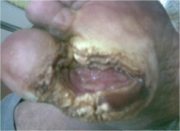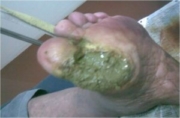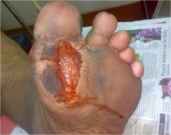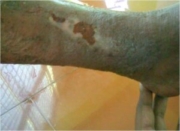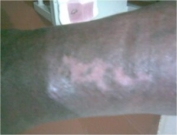Wound Management
Wound Management in Ayurveda
What is wound?- Any damage leading to a break in the continuity of the skin is called as a wound.
- Non-specific ulcers
- Specific ulcers and
- Malignant ulcers
- Shuddha Vrana
- Dushta vrana
- Ruhyamana vrana
- Rudha Vrana
- Antargata Shodhana (internal purification)
- Bahirgata Shodhana (External purification)
Ropana: Ropana means a factor, which promotes or quickens the healing process. At present the modern system of medicine could not find such karma which promotes the process of healing except anti-infective and debriding agents. But the great ancient surgeon, Sushruta gave his attention towards the Ropana. Sushruta mentioned the ropana process in the form of kashaya, Varthi, Ghrita, Taila, Choorna, etc.
